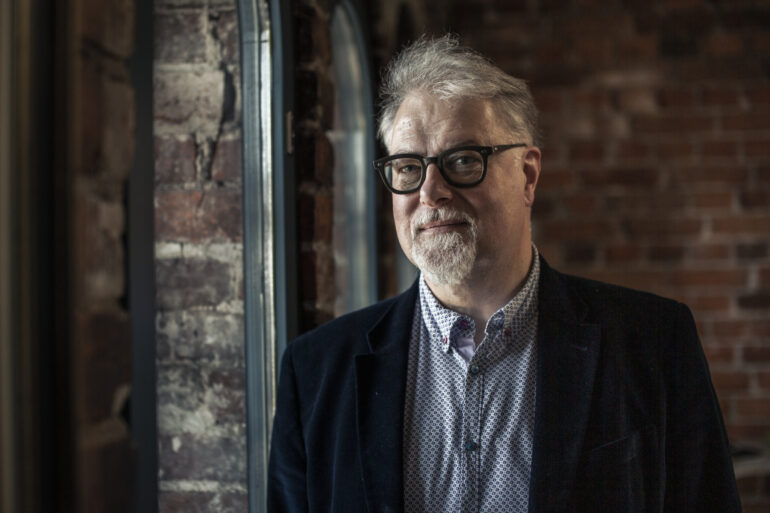WRITTEN BY: Heidi Herrmann
The Finnish Film Foundation's new strategy for the next three years, published March 11th, aims to secure the industry’s operating conditions.
In its new strategy, the Finnish Film Foundation is focusing on "securing the operational capacity" of the Foundation, and attempting to minimise the impact of future cuts in public funding.
The Finnish right-wing government has declared a requirement to reduce costs by four billion euros during this mandate period, in order to decrease the state's debt ratio. This will inevitably result in cuts to the film industry. In other Nordic countries, the film industry receives more than double the Finnish budget support.
This year, the Finnish Film Foundation is operating with approximately one million euros less than in 2023. There are discussions that the cut amount will remain the same in the following years. This comes at a time when Finnish film funding is already lagging behind other Nordic countries.
“This makes me want to cry, as I come home from the meetings with our Nordic neighbours,” says CEO of the Finnish Film Foundation, Lasse Saarinen.
For instance in Denmark, which has the same population size as Finland, the budget for the Film Institute is three times larger. Norway's budget is about double the one of the Finnish Film Foundation, and Swedish public money for the film industry reaches about 15 million euros more.
“The politicians in our neighbouring countries understand the impact of culture and that the film industry is important to the economy. Danish film has always been publicly well funded and has been internationally successful, which in turn has led to more investments.”
“But sadly, in Finland neither of these arguments seem to work,” Saarinen says.
Film institute support budgets in the Nordic countries in 2019, which was the last normal operating year before the covid 19 pandemic, were as follows: Denmark 73 million, Norway 52 million, Sweden 38 million, and Finland 25 million euros.
Following this, the Danish government provided the biggest funding package in years for the film industry. An average film budget in Denmark is more than 4 million euros, whereas a Finnish film has an average budget of 1.7 million euros.
In Iceland, the government has worked out a ten year film policy stretching from 2020 to 2030. Still, due to rising costs, the Icelandic government has cut the funds for Icelandic Film Centre by over 13 per cent for this year, compared to 2023.
The Director of Icelandic Film Centre, Gísli Snær Erlingsson, says that the Centre has a duty to respond to the industry to prevent it from losing momentum, and that they are looking into what will be emphasised in the future.
"We do make it clear that we want to see more films and TV shows for children, and we want to see quality in terms of how many women are engaged in projects. Are we going to focus more on first films, or on big budget films? All I'm saying is that we are having this conversation."
"Are we capable of responding to the industry as required? We are relatively small, so we can react quickly. We aim to address any weaknesses in being fit for purpose."
The Finnish Film Foundation is also looking into ways of implementing a more flexible support policy, and to allocate support funds annually for the most acute needs.
The Finnish Ministry of Culture decides the amount of funding from year to year. Most of the public money for the industry flows through the Finnish Film Foundation, with a budget of about 24 million euros per year, which is the same amount as ten years ago, in 2014. Considering inflation, the amount has actually shrunk; about eight million euros less.
Every year the Finnish Film Foundation grants support to 60-70 productions, including approximately 20 fiction films, short films and documentaries, as well as festivals and cinema theatres. A fiction film usually receives between half a million euros and one million euros in production support.
The Foundation provides 19 different forms of support, the biggest (18 million euros) being production support. Lasse Saarinen says there will be no priority in terms of type of films and projects.
“We will not start prioritising certain types of film, but we may have to reduce some forms of support.”
A greener way of making film, and hiring an Eco-Coordinator or a consultant that would make sure the production is carried out as climate friendly as possible, is something that has been planned for a long time, but will not happen now, as the Finnish Film Foundation focuses on the basics and keeping the industry going.
In recent years, genre films have been granted more money in production support.
“These films are easier to sell abroad, and therefore they receive international funding, as they usually have a pretty clear target audience.”
Examples of these types of genre films are Jalmari Helander’s war film Sisu (2022), Taneli Mustonen’s horror film The Twin (Paha Kaksonen, 2022), and Hanna Bergholm’s psychological horror film Hatching (Pahan hautoja, 2022).
The last four years, Finnish cinema has had exceptional success both domestically and internationally. Now, Saarinen is worried that Finnish films will lose their competitiveness and growth potential.
“Documentaries and feature films directed by women are the only driving force behind the international success of Finnish film right now,” says Lasse Saarinen.
According to him, Finland is in the top four countries in Europe when it comes to equal gender funding, and female directors like Alli Haapasalo, Selma Vilhunen and Jenni Toivoniemi have had international success with their work.
A streaming levy, currently in operation in seventeen European countries, including Denmark, would also be welcomed in Finland, Lasse Saarinen says.
"If it would give some 10 million euros back to the industry, it would be a much-needed booster shot.”
Read the whole strategy of The Finnish Film Foundation: CLICK HERE.
Read more about the Danish Film Agreement: CLICK HERE.
Read more about the Icelandic Film Policy: CLICK HERE.
